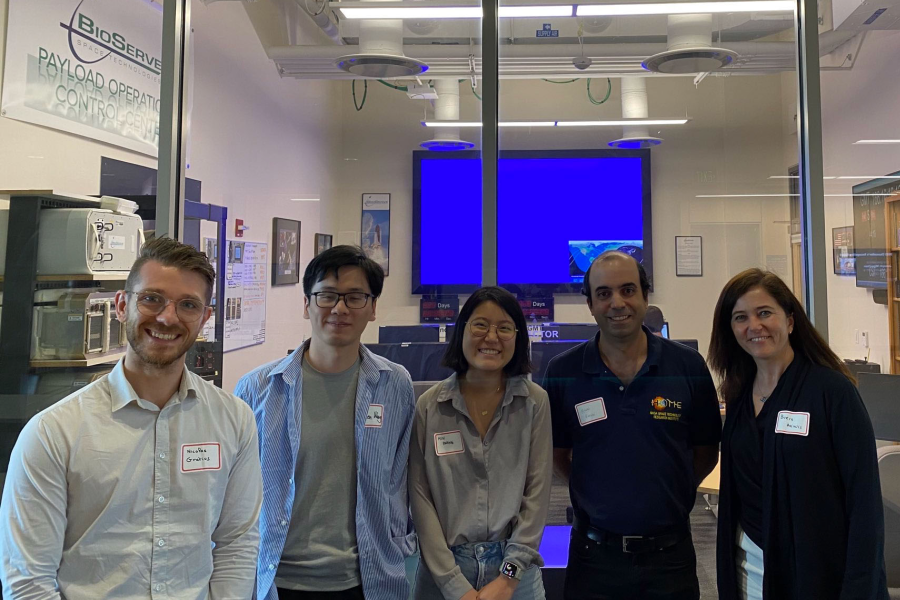
Deep Space Exploration: Hwang Utilizes Digital Twins and Fault Diagnosis for NASA Research
 It’s uncomfortable when the AC breaks at home. But imagine the AC breaking on a spaceship, 200 million miles away from the Earth–on its way to Mars. PhD student Min Hwang spent the past four years researching scenarios that could impact the success of NASA’s off-earth missions. Her work focused on testing scenarios using Digital Twins–discovering how to quickly address problems to find their root causes to discover solutions that could save lives.
It’s uncomfortable when the AC breaks at home. But imagine the AC breaking on a spaceship, 200 million miles away from the Earth–on its way to Mars. PhD student Min Hwang spent the past four years researching scenarios that could impact the success of NASA’s off-earth missions. Her work focused on testing scenarios using Digital Twins–discovering how to quickly address problems to find their root causes to discover solutions that could save lives.
“The project, funded by NASA’s Space Technology Research Institute (STRI), is targeted toward developing low technology readiness-level research for deep space habitats,” says Hwang. “We meet yearly to talk with NASA personnel and get their input on how to shape our research.” The fourth year focused on technical demonstrations, and Hwang served as the scenario scientist who led nine PhD students.
“[Our group], which included CEE PhD students Nicolas Gratius and Zhichen Wang, presented a technical demonstration to NASA on diagnosing and responding to faulty environmental control and life support systems (ECLSS) using Digital Twins,” she adds. Space exploration requires precision systems, including long-term life support. Hwang’s team researched environmental control and life support systems to determine how faults in that essential system could be quickly pinpointed and addressed to preserve lives during a space mission.
While the research is still years away from being utilized in outer space, Hwang says there are real-world uses for fault diagnosis research. She explains the situation in real-world terms. “If you are in a room and you see that the temperature is set at 72, but the room is clearly warmer, you know that the equipment is not working properly.” The next step is to find out why.
To test how this monitoring and identification process could work, her team used Digital Twins. They could “twin” the behavior of a physical system to perform tests and see how the system would respond. “We could insert faults and see what happened. This allowed us to make better diagnoses and predictions.”
Working on the project took her on a path she didn’t quite expect prior to starting PhD program. “I’d been working in a civil engineering firm, and this gave me the opportunity to scope out the aerospace industry. It is a great time to be a part of this research because there’s been an exciting rejuvenation and interest in the field.”
Hwang adds that she’s grateful for the opportunity to work on the project with Professors Mario Bergés and Burcu Akinci—whose work she greatly admires. When Hwang applied to CMU for her PhD studies, Bergés and Akinci reached out to her and suggested she’d be a great match for the NASA research. Their stamp of approval led her to choose CEE.
Moving forward, Hwang is excited to branch out from her civil engineering foundation and use that knowledge in nontraditional ways. “The program allowed me to build skills that can be used in many fields, like the aerospace industry.”
The five-year project, called Habitats Optimized for Missions of Exploration (HOME), is a multi-university effort that includes CMU; University of California, Davis; University of Colorado Boulder; Howard University; Georgia Tech; University of Southern California; and Texas A&M.